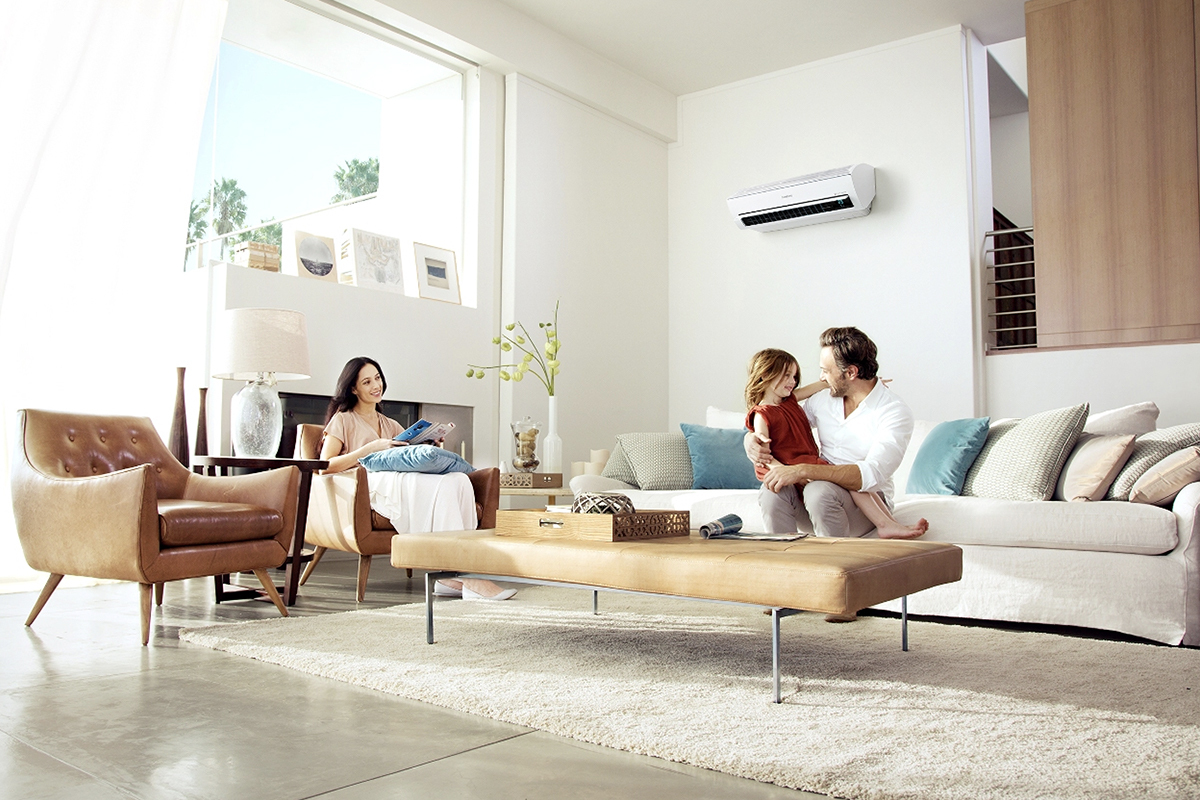No products found for your query {{ searchQuery }}

The Ultimate 2024 Guide To Buying A TV In Australia
The televisions of today are bigger, better and more affordable than ever before! Nowadays, you’ll find a long list of incredible features available on new TV models, from magnificent picture and sound quality to smart access to almost unlimited content on streaming platforms like Netflix and Stan. With 4K and HD technology readily on offer, it’s easier than ever to enjoy a truly mind-blowing cinematic experience from the comfort of your living room. No matter what your budget is, Retravision can help you find the right TV for your home!
Our comprehensive TV buying guide has all the advice you need when it comes to learning what to look for when buying a TV in Australia. We compare all the best options and features available, so you can make the best decision about which TV you should buy. Plus, you can always speak to our friendly team in-store and online for help finding the perfect TV; we’re the experts in home theatre systems!

Tips on your television
Check out our handy TV buying guide for all the best tips and advice on buying a television and check out all the latest products from leading brands!
Can’t decide? Try our TV Selector
Types of TVs
What TV should you buy - OLED, QLED, ULED, Smart TVs, 4K, 8K? At Retravision you’ll find a huge range of TVs on offer from some of the world’s biggest brands like Samsung, LG, Hisense & TCL but with so much technology available, how do you choose? Navigating the world of TVs has become incredibly complex, and a little overwhelming, but don’t worry! We’ve included a breakdown of the different types of TVs you’ll currently find available below, so you can compare.
8K TVs
8K TVs have four times the resolution of 4K TVs, making for an incredibly clear picture. You’ll find 8K technology to be incredibly immersive, blacks are richer, colours brighter and images sharper. Many of these incredible next generation TVs come with AI features designed to enhance older films, so everything you watch looks amazing.
Shop Our Range
Ultra HD 4K TVs
Ultra HD 4K TVs will provide you with an incredible crisp, clear picture and are becoming the new standard for those looking to enjoy an incredible viewing experience. A 4K display will have at least 8 million pixels, which means the image will appear crystal clear and much sharper than 1080p TVs. The catalogue of 4K content has grown steadily since the technology was introduced, meaning you can sit back and enjoy the full experience with popular new TV shows, movies and games, and many TVs also have image enhancement options to help you get the best out of your old favourites.
Shop Our Range
QLED TVs
QLED means ‘Quantum light emitting diode’, which is a technology that is capable of producing incredibly bright, vibrant colours. Quantum dots are transmissive and are known for enhancing colours, making for incredibly brilliant white and great contrasts.
Shop Our Range
Top QLED TVs
OLED TVs
OLED means ‘Organic light emitting diode’. TVs that use this technology are incredibly lightweight and thin and feature incredible picture quality. They’re displays are known for being emissive, which means they create their own lights. They produce very rich, true blacks and amazing colour vibrancy.
Shop Our Range
Smart TVs
TV's have made their way online! Smart TVs are part entertainment unit, part internet-surfing powerhouse. Modern TVs are capable of seamlessly connecting you to the internet, making it simple for you to browse online content, stream your favourite TV shows, access social media and play games online. Most Smart TVs will have a number of in-built apps, like Netflix and Stan so you can start watching at the touch of a button. Most newer TV models will have Wifi connectivity - those that don’t can usually be converted with an external device.
Shop Our Range
HD TVs
HD stands for high definition. HD TVs have a much higher resolution and picture quality than older generation standard definition TVs. Most TVs that are 720p or more are considered to be ‘high definition’ and nowadays often come with smart features and internet connectivity.
Shop Our Range
Top HD TVs

What To Consider
When comparing TVs there are a few key things to consider;
Size
When choosing a TV you’ll need to consider the size of the screen that you want and what’s going to fit inside your home. TV's come in many sizes, but the most common sizes you’ll come across are 32”, 40”, 55”, 65”, 75” and 85” TVs, but they can get as small as about 22”. Before choosing a size you should think about the layout of your space - a large TV in a smaller room could be overwhelming whilst you may not be able to see a TV that is too small and far away! You’ll also need to think about how you plan to mount your TV, if you plan to place it on your wall then you should make sure that it’s not too large or heavy for your wall to support it!
Screen Technology
Another important thing to consider is the type of screen technology you want to opt for. The perfect option for you will depend on your preferences and viewing habits. Some people only ever casually watch TV and see minimal difference between QLED and OLED for example, whilst others who love a great home theatre experience may be passionate about the crispness of the picture on their TV. For gamers, refresh rate and smart features may be most important. A higher refresh rate means you will be shown more frames per second, which generally means you’ll enjoy a smoother picture on the screen and none of the motion blur and choppiness that used to be common when watching content with a lot of fast movement on the screen.
Ports
Before choosing a TV, you should consider what ports and connections you require. Some TVs will have less ports and inputs than others. If you plan to connect a soundbar, gaming system or modem to your TV then it might become frustrating if you don’t have enough ports available, so check out whether or not you’ll be able to plug everything you want into your new TV.
Audio
A lot of TVs have excellent in-built sound quality nowadays, or for a truly immersive experience you may want to invest in a soundbar or surround sound audio system. Audio’s an important part of the home theatre experience, so it’s well worth it to test this out on any TVs you’re looking at buying.
Mounting
Where are you planning to install your TV? Will it be wall-mounted, resting on a table top or integrated into a full home theatre system? You’ll want to check that your TV comes with the correct hardware or accessories, or make sure you purchase them so that you can properly install your TV.
Cost
The cost of TVs can vary dramatically. Older technologies have become incredibly inexpensive and it’s now possible to buy a TV for just a few hundred dollars! You’ll find many large HD or even UHD TVs available for less than $1000. Even QLED, OLED and 4K technology has become very affordable, with many models now within reach of a modest budget. Newer technologies and large 75” and 85” models often command a higher price tag, with the latest cutting edge technology likely to set you back several thousand dollars.
Cables & Accessories
You should also consider what cables and accessories you’ll need to properly install your TV and to connect it to all your devices. You may for example need a HDMI cord, or audio and optical cables.
FAQs
What is the most reliable TV brand?
At Retravision we stock a number leading TV brands with excellent reputations for quality and reliability. Sony, Samsung, LG, Hisense and TCL are all known for producing TVs that hold up very well over time, both in terms of performance and in the longevity of their technology.
Does a smart TV need WiFi?
Whilst you won’t get the full range of features and benefits of a Smart TV without a WiFi connection, you can still use them. Smart TVs can still be connected to an antenna and used to play TVs, movies and more even without access to the internet but you won’t be able to stream video or browse the internet.
What device turns your TV into a smart TV?
There are a number of devices that can make your TV smart. Gadgets like the Google Chromecast can make it possible to stream content from your laptop or phone onto your TV, whilst devices like the Apple TV will give you access to Apple’s catalogue of movies and films. You’ll also find other devices available which can make it possible to browse the internet, download applications and much more.
How many years should a TV last?
You can usually expect your TV to last you around 7-8 years, although they can last well beyond 10 years before needing to be replaced. The average lifespan of an LED is said to be around 7 years, so after this point you can expect that the lighting of your TV will start to dim. Reducing the brightness of your TV can help to prolong its lifespan.
Which TV brand lasts the longest?
Samsung, LG, Hisense and TCL are particularly lauded for their high quality TVs and impressive workmanship. Great quality components and easy access to replacement parts means you can often expect their TVs to work well for many years before needing to be replaced.
Are all new TVs smart TVs?
Not all new TVs are Smart TVs, but almost all of them are now. The technology is readily available and no longer cost-prohibitive like it was in the early days. It’s now incredibly affordable to buy a Smart TV. If you prefer a traditional TV, then it’s simple to keep them offline and disconnected from the WiFi.
What features to look for in a smart TV?
If you’re looking to purchase a Smart TV then we recommend looking for features like an intuitive user interface (some come with familiar Android or Apple OS), access to streaming apps like Netflix, music streaming capabilities, app stores, web browsers, games and other extras like voice or motion control.








